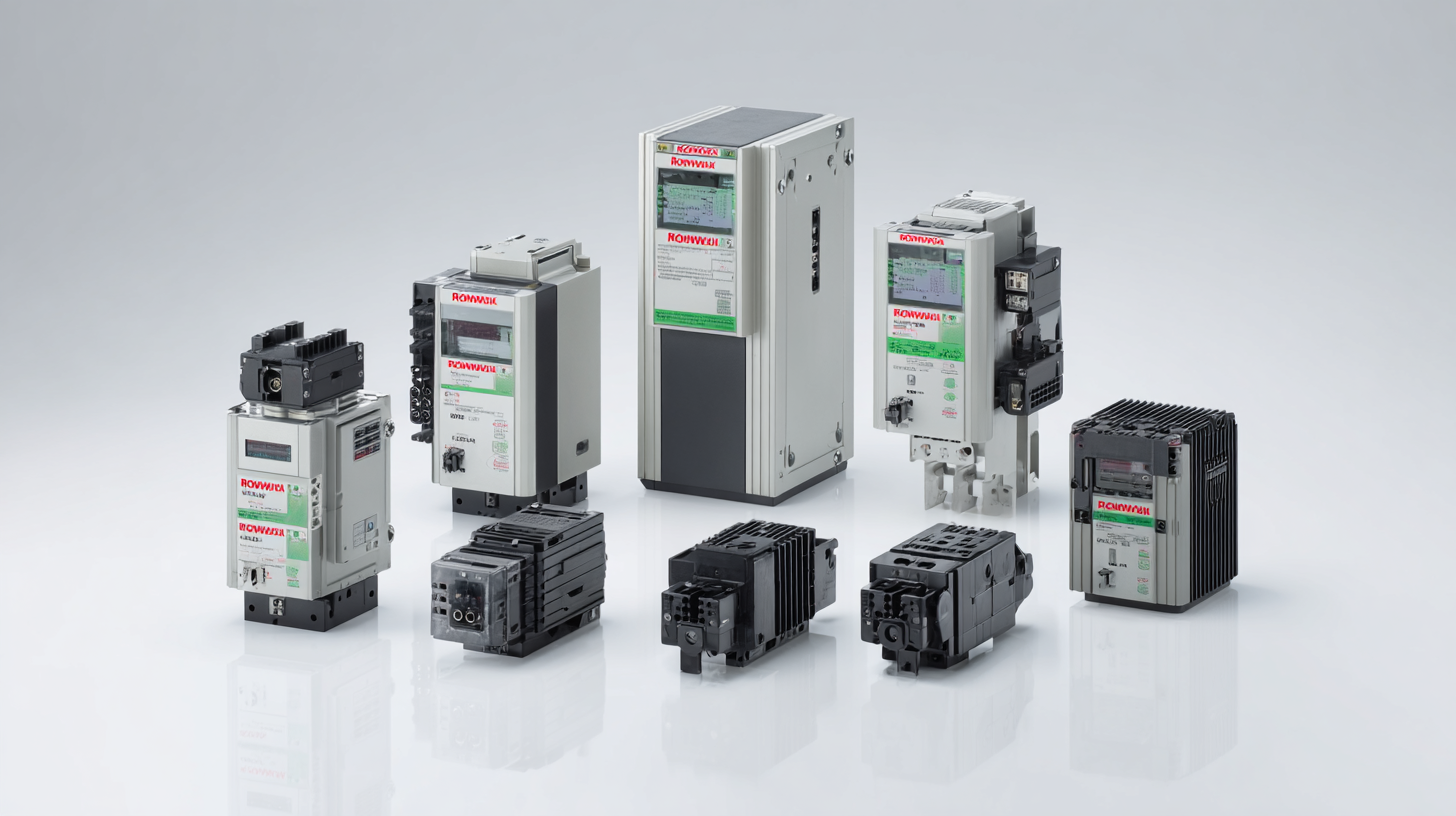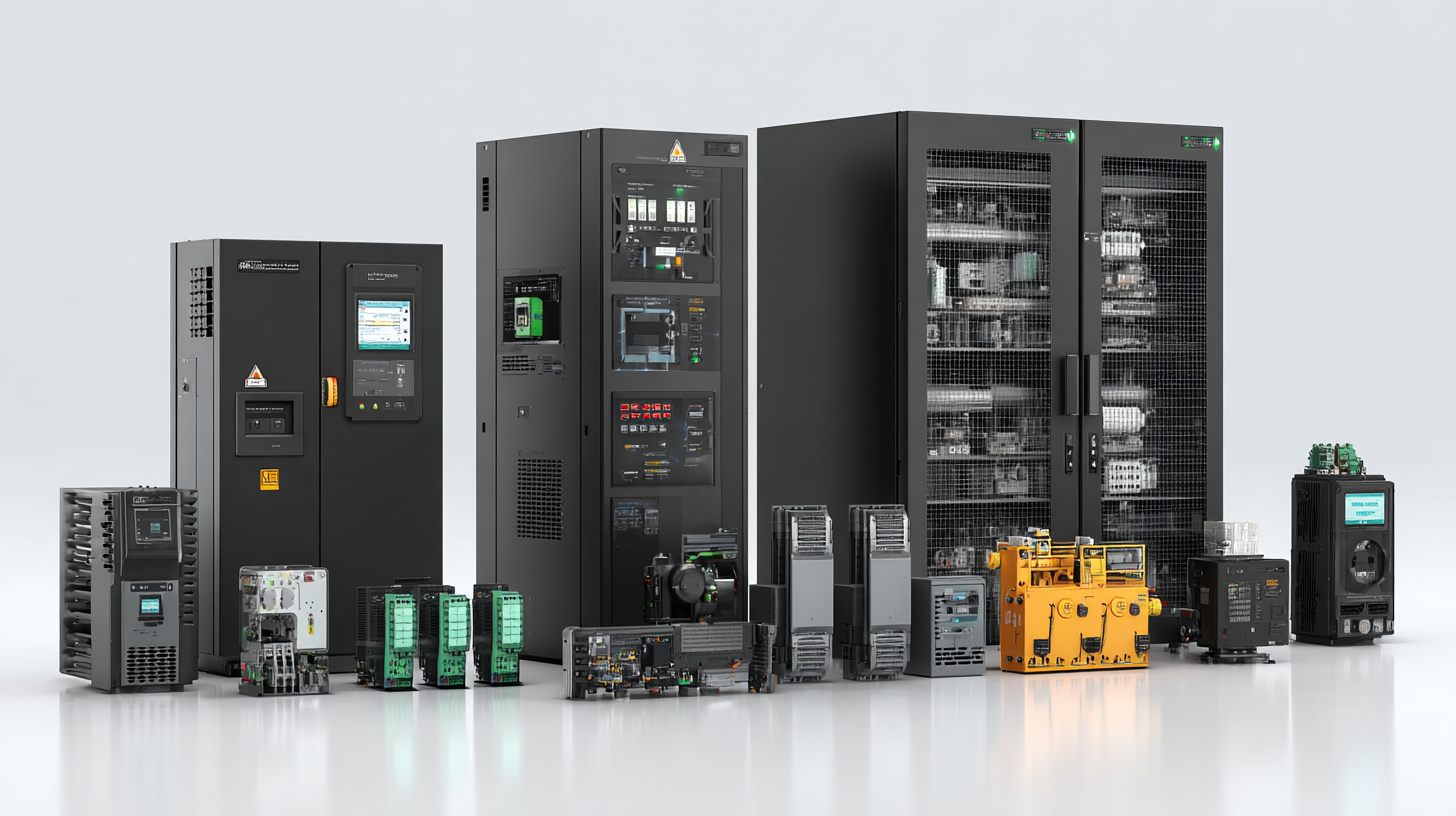
-
Home
-
Products
-
Application
-
Documents
-
News
-
Blog
-
Blog
-
Sinsegye
Leave Your Message
-
Wechat OA

-
 Baijia Hao
Baijia Hao



 Baijia Hao
Baijia Hao

In the rapidly evolving landscape of industrial automation, the selection of drive systems is pivotal to achieving optimal performance and efficiency in manufacturing processes. Among the leading solutions available in the market, Rockwell Automation Drives have gained significant attention due to their reliability and advanced technology. According to a report by MarketsandMarkets, the global industrial automation market is projected to reach $200 billion by 2025, with drive systems playing a crucial role in this growth. The integration of rock-solid performance with cutting-edge features has positioned Rockwell Automation Drives at the forefront of this transformation, making them a preferred choice for many manufacturing plants ranked among the top globally. In this blog, we will explore a comprehensive comparison of Rockwell Automation Drives, highlighting their capabilities, advantages, and applications to determine the best fit for your operational needs.

In the quest for enhanced manufacturing efficiency, Rockwell Automation drives stand out for their robust performance features that cater to modern production needs. These drives not only provide precise control over machinery but also integrate seamlessly with advanced technologies, allowing for real-time data analysis and predictive maintenance. The emphasis on such capabilities aligns well with the broader trends in the manufacturing sector, where companies are increasingly turning to automation and AI to boost productivity. For example, recent developments in AI technology have introduced predictive and prescriptive analytics that help manufacturers optimize their operations, reflecting a growing trend that Rockwell Automation drives are well-positioned to support.
Furthermore, as manufacturing continues to pivot towards smart technologies, the capabilities of Rockwell Automation drives become even more crucial. Features like energy efficiency and flexibility are not just beneficial; they are essential for manufacturers looking to adapt to dynamic production environments. The push for diversified supply chains and the emphasis on automation in markets like Southeast Asia highlight the importance of such innovations in driving operational excellence. As we look at the landscape of manufacturing automation, it’s clear that Rockwell Automation drives, with their advanced functionalities, play a critical role in shaping the future of efficient and sustainable production practices.
The analysis of energy consumption reveals significant insights into the performance capabilities of various drives compared to industry standards. With the global variable frequency drive market projected to grow from $24.68 billion in 2025 to $32.00 billion, it’s evident that industries are prioritizing efficiency and sustainability. Notably, Rockwell Automation drives have demonstrated impressive energy efficiency ratings, often surpassing not only the average benchmarks but also providing reliability in demanding applications.
Tip: When considering a drive for your operation, assess not only the initial investment but also the long-term energy savings it provides. Look for models that feature advanced algorithms for energy management, as these can reduce operational costs significantly over time.
Comparative studies show that Rockwell drives typically consume less energy while maintaining optimal performance levels, which can greatly influence a company's bottom line. Implementing such technology not only reduces overall energy costs but also contributes to a greener manufacturing process.
Tip: Always consult industry reports to understand the latest advancements in drive technology, as this knowledge can aid in making informed decisions that align with your energy efficiency goals.
| Drive Model | Energy Efficiency (%) | Operational Power (kW) | Typical Load (kg) | Annual Energy Consumption (kWh) | Comparison with Industry Standard (%) |
|---|---|---|---|---|---|
| Drive A | 95 | 55 | 1000 | 48000 | 10 |
| Drive B | 92 | 75 | 1200 | 66000 | 5 |
| Drive C | 90 | 60 | 800 | 42000 | 8 |
| Drive D | 88 | 50 | 900 | 40000 | 7 |
In the ongoing quest for optimal performance in industrial automation, evaluating speed and torque in drives has become increasingly critical. The latest developments highlight a substantial shift towards real-time motion feedback in closed-loop control systems, significantly enhancing the efficiency of operations. By implementing advanced feedback mechanisms, manufacturers can now achieve higher precision in speed and torque management, leading to improvements in productivity and operational reliability.
Additionally, the introduction of variable frequency drives (VFDs) is revolutionizing the market, driven by a strong emphasis on sustainability and cost-efficiency. As more industries adopt automation, the demand for sophisticated drives that can effectively optimize processes continues to rise. Innovative options, such as the modular drive designs catering to various power ranges, are enabling machine builders to streamline their operations while managing costs more effectively. This evolution in drive technology not only boosts performance metrics but also solidifies the importance of choosing the right drive for specific industrial applications.

Rockwell Automation has long been synonymous with cutting-edge industrial automation solutions, particularly its range of drives that utilize advanced control algorithms. These algorithms enhance the precision and reliability of machinery performance across various sectors. According to a report by MarketsandMarkets, the global market for industrial automation is expected to reach $295.75 billion by 2024, with drive solutions playing a significant role in this growth due to their efficiency and advanced functionalities. The implementation of Rockwell’s drives significantly reduces downtime and optimizes process control, enabling manufacturers to achieve higher productivity.

The precision embedded within Rockwell drives is largely attributed to their innovative control strategies, including model predictive control and adaptive control techniques. These strategies allow for real-time adjustments based on operational parameters, as highlighted in a study by the International Journal of Control. This adaptability ensures that machines operate within their optimal performance zones, thus enhancing reliability. With the ability to anticipate and respond to disturbances quickly, Rockwell drives outperform traditional solutions, leading to decreased energy consumption and improved overall system resilience in industrial environments.
China's industrial landscape is rapidly evolving, and Rockwell Automation drives are playing a pivotal role in this transformation. A recent case study at a leading automotive assembly plant in Shanghai showcased how the integration of Rockwell drives increased efficiency and reduced energy consumption by over 20%. The flexibility of these drives allowed the plant to implement advanced automation techniques, streamlining operations and enhancing overall productivity. As manufacturers in China seek to optimize their processes, the real-world application of Rockwell drives proves to be invaluable.
Another compelling example can be found in the textile industry, where a textile manufacturer in Zhejiang province adopted Rockwell drives to enhance production precision and speed. Following the upgrade, the facility reported a significant decrease in downtime, with the drives' adaptive control capabilities adjusting to varying operational demands seamlessly. This adaptability not only improved the quality of output but also facilitated faster response times to market changes. These case studies illustrate the tangible benefits that Rockwell Automation drives bring to industries in China, reinforcing their reputation as a leading choice for optimal performance in a competitive environment.
This chart compares the efficiency and reliability scores of various top drives, showcasing their performance capabilities. The data represents real-world applications and highlights the impact of these drives in improving operational performance.